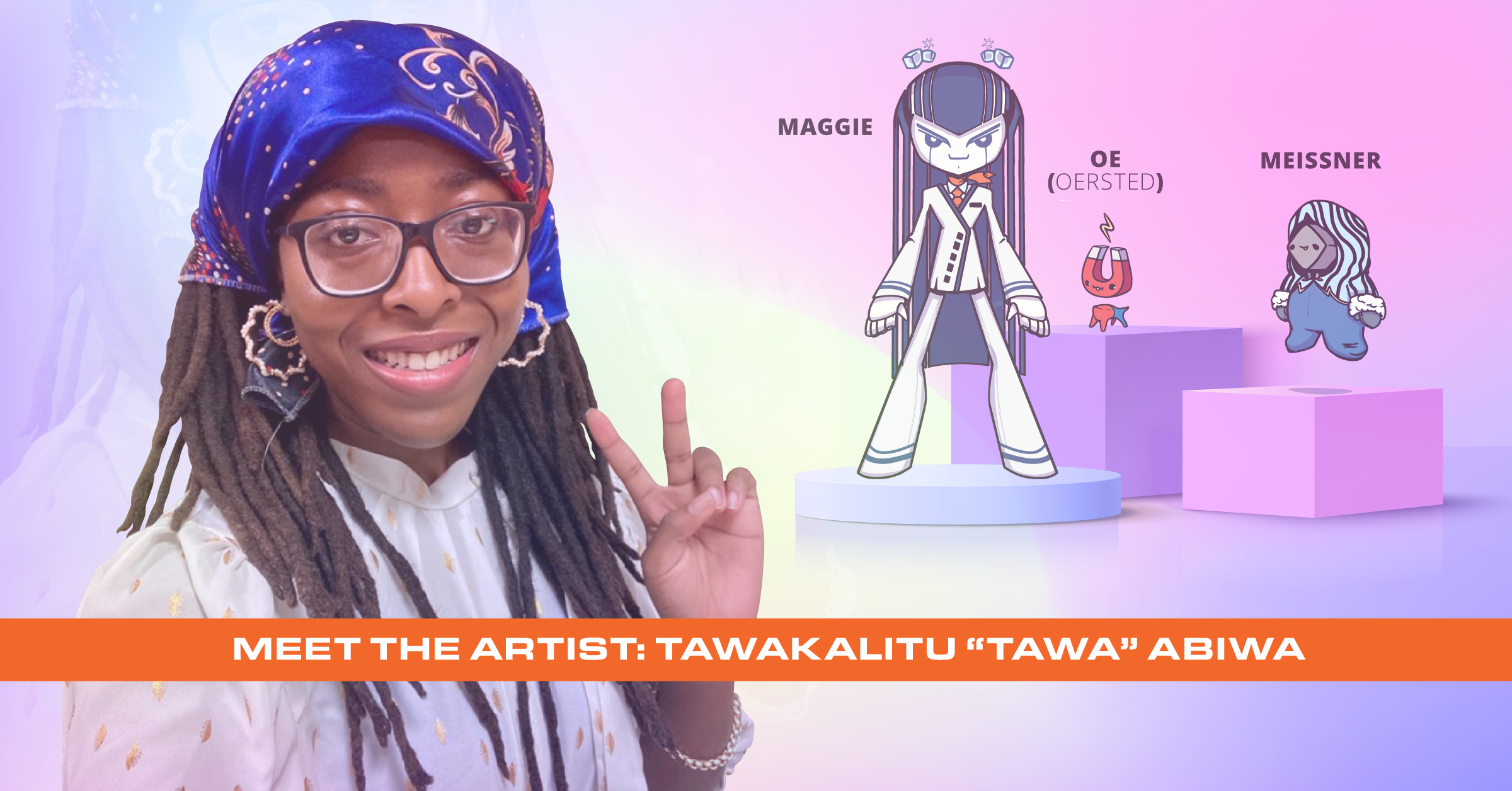A local artist develops a new way to learn about superconducting maglev
Now that you’ve met our Magnetic Marvels – Maggie, Meissner, and Oersted (OE) – it’s time to meet the person who brought them to life. One of the most exciting things about our work to bring the SCMAGLEV train to the U.S. that it gives us to work with professionals and experts from a variety of disciplines. This week, we’re highlighting the exciting work done by Artist Tawakalitu “Tawa” Abiwa.
Tawa recently graduated from the University of Maryland, Baltimore County with a Bachelor in Fine Arts in Graphic Design. We initially brought her onboard as part of our summer internship program. However, when Tawa’s plans changed and took her out of the area for the summer, we knew we didn’t want to let the opportunity to work with her slip by! So, we hired Tawa for the summer, asking her to develop a family of characters based on superconducting magnetic levitation technology. And boy, did she deliver!
These characters will be a crucial part of our efforts to help kids understand the science that powers the SCMAGLEV, especially those we meet through our STEM program. By personifying some of these complicated scientific concepts, we hope to encourage kids to learn more about science, becoming the future scientists that will keep society moving forward!
Let’s dig a little deeper into Tawa’s creative process.
Have you always been artistic? When did you know that you wanted to pursue art as a career?
- From a young age, my passion for the visual arts has been a constant in my life, serving as a powerful means to escape from life’s troubles and immerse myself in a world of creativity and imagination. My fascination with speculative biology, sculpting intricate worlds and creatures within, allowed me to make the fantastical feel tangible and real in my mind. During high school, I began considering the possibility of turning my passion into a career. For me, drawing is a delightful blend of playfulness and problem-solving, offering a unique way to explore ideas visually and give life to my imagination on paper. Art, as a medium, possesses a transformative power like no other, like a real-life philosopher’s stone, turning the intangible into the tangible, making the impossible possible. This ability to bring my visions to life is what fuels my pursuit of an art career.
What typically inspires your artwork? Are there any artists whose work you admire/find inspiration from?
- My artwork is predominantly inspired by a diverse range of sources, but I source primarily from the vibrant community of artists on Instagram. Aside from close friends and family, my Instagram feed is curated to be a haven of artistic brilliance, featuring creators whose work deeply inspires me. Witnessing the various solutions and responses artists present to a single concept is an endless source of fascination for me. The boundless ways in which one can depict an idea or subject captivates my imagination, and the influence of this constant influx of creativity radiates in all directions. It is a truly mind-opening experience, one that keeps my artistic spirit alive and thriving. The diverse perspectives and styles showcased by these talented artists push me to explore beyond my creative boundaries and continuously evolve as an artist.\
Often, the sciences and the arts are viewed as very different worlds, but this project combines them in a unique way. Can you describe the process you took to develop the maglev characters? Did you have to do a lot of research?
- Taking inspiration from science is as simple and natural as drawing from the wonders of the natural world. It surrounds us, just expressed in different ways. I begin with research to expand my knowledge. The more I knew, the more I had at my disposal to infuse into the work. I followed a process of pursuing every idea with low fidelity sketches, allowing my imagination to flow freely without restriction. At this point, it’s too early to dismiss anything, avoiding putting myself in a creative box. This stage is about exploration and allowing ideas to flourish without limitations. As my understanding of scientific concepts deepened, I learned how they are currently visualized in the scientific community. This insight provided me with an understanding of the visual language already established in scientific fields. From there, it became a matter of translating one visual language into another.
Did you learn anything about yourself with this project? Did you enjoy the combination of art and science?
- It’d been a while since I got into an extensive character design project, so I learned I fortunately still love doing it.
Do you have any advice for aspiring artists who may also be interested in the sciences?
- Like science, art begins with inquiry and observation. Scientists and artists alike observe the world through their unique perspective, paying attention to details, emotions, and sensory experiences to create their works. Again science like art needs unique perspectives to advance and we both must face the struggle of translating our ideas or discoveries into tangible form. I think artists and scientists are more alike than different, so don’t be afraid to blend them as you see fit.
